|
|
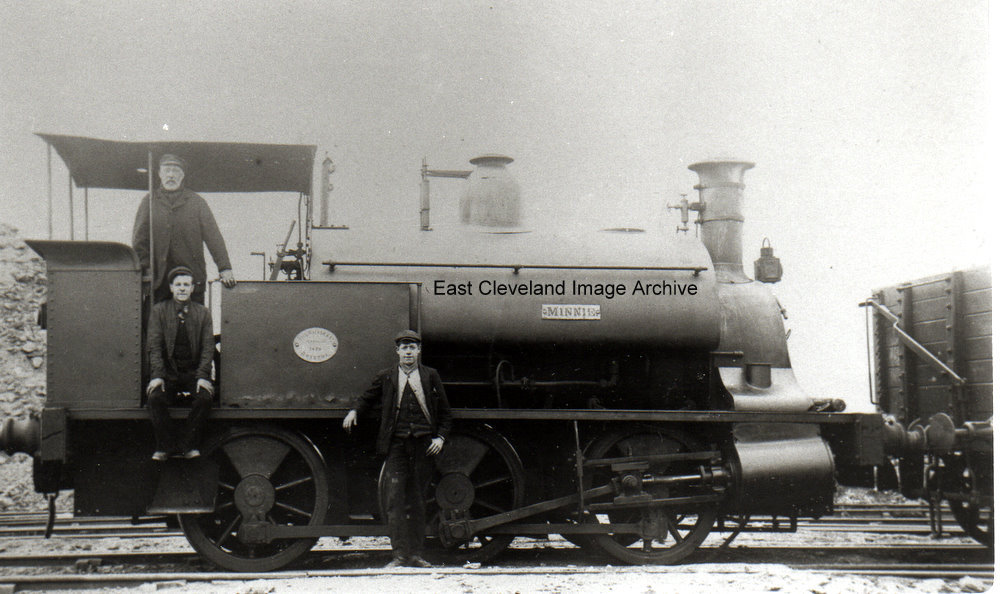
Minnie at the beginning of her career at Skinningrove, canvas roof over the crew quarters, sprung buffers and very Victorian safety valve. A good example of industrial photography. Driver is now identified as Thomas Baldwin (standing in front of Minnie). Minnie a 0-6-0ST locomotive was built by Fox Walker of Bristol in 1878, her original engine number was 358. Minnie can still be seen at the Mangapps Railway Museum in Essex.
Image courtesy fo the Pem Holliday Collection and thanks to Violet Shaw (nee Baldwin) for this information about her father.
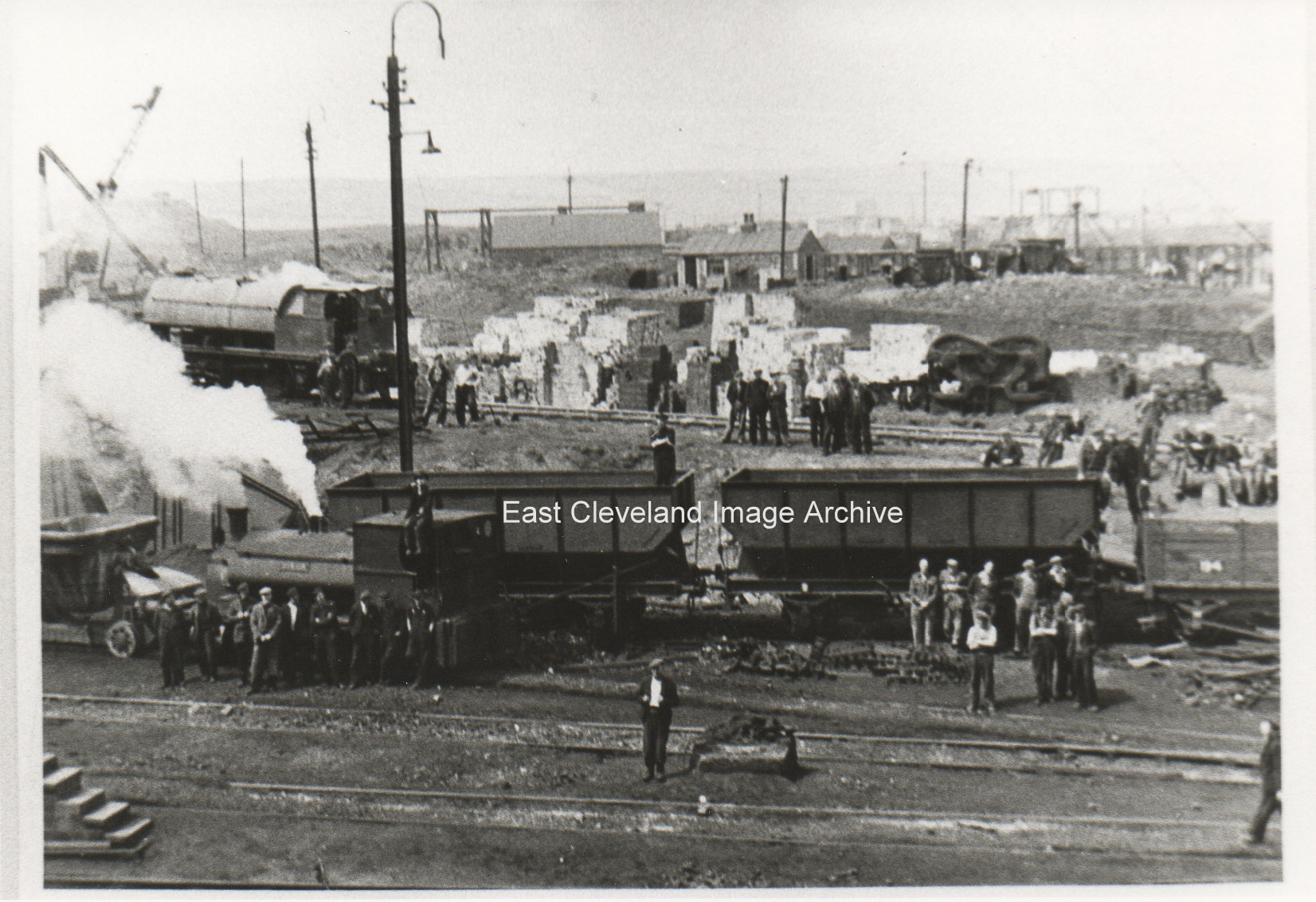
This must have ben a pretty important day, judging by the number of people standing around and the obviously posed nature of the image. Eric Johnson tells us: ”That it was possibly the blowing in of the new no. 5 Blast Furnace in 1950.
Image courtesy of the Pem Holliday Collection, also thanks to Eric Johnson for the update.
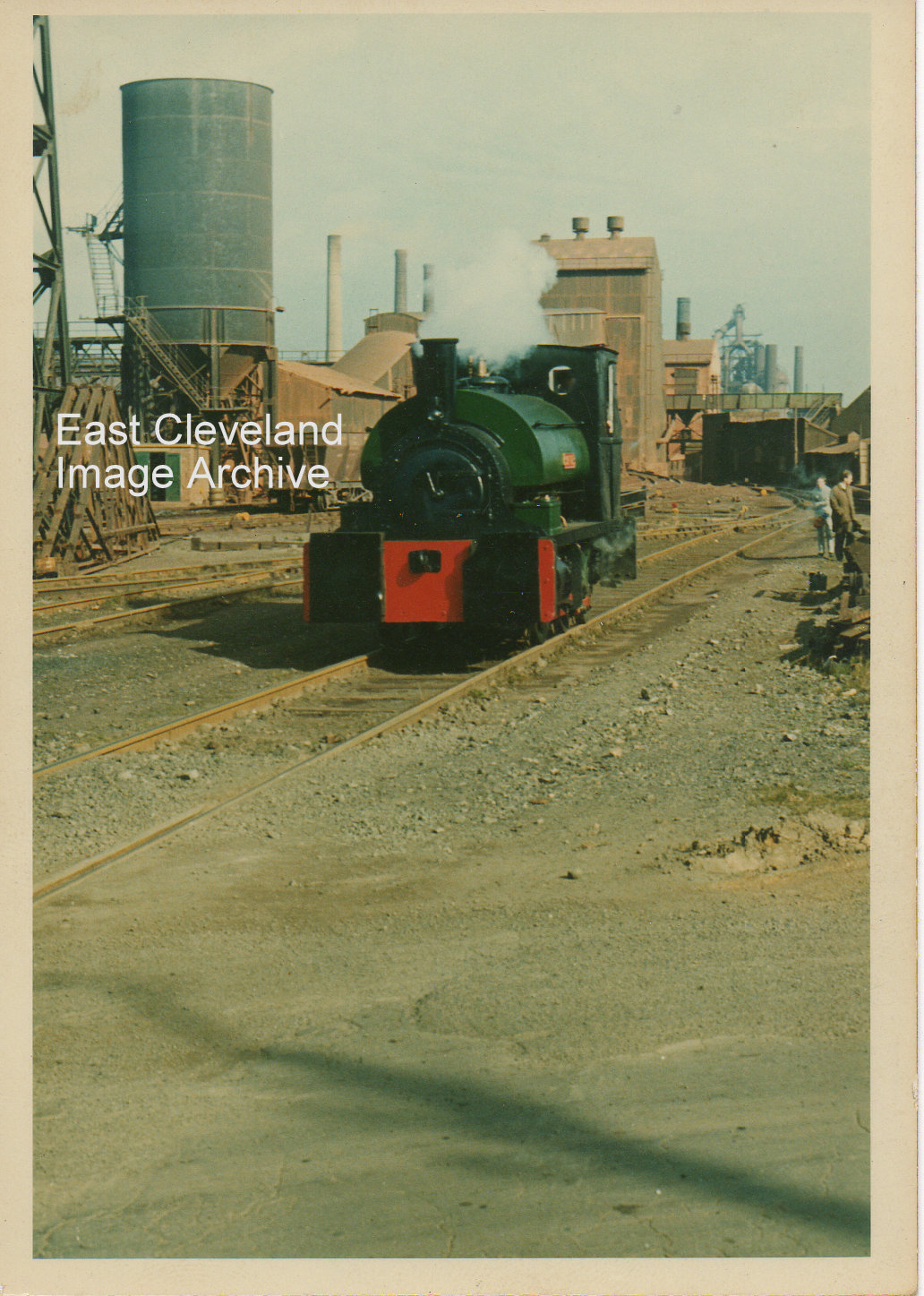
Minnie, obviously refurbished and resplendent in a new coat of paint, in steam, prior to disposal. Minnie left in 1968 for the Kent and East Sussex railway but has since moved to the Mangapps Railway Museum in Essex.
Image courtesy of the Pem Holliday Collection and thanks to Mark Thompson for the update.
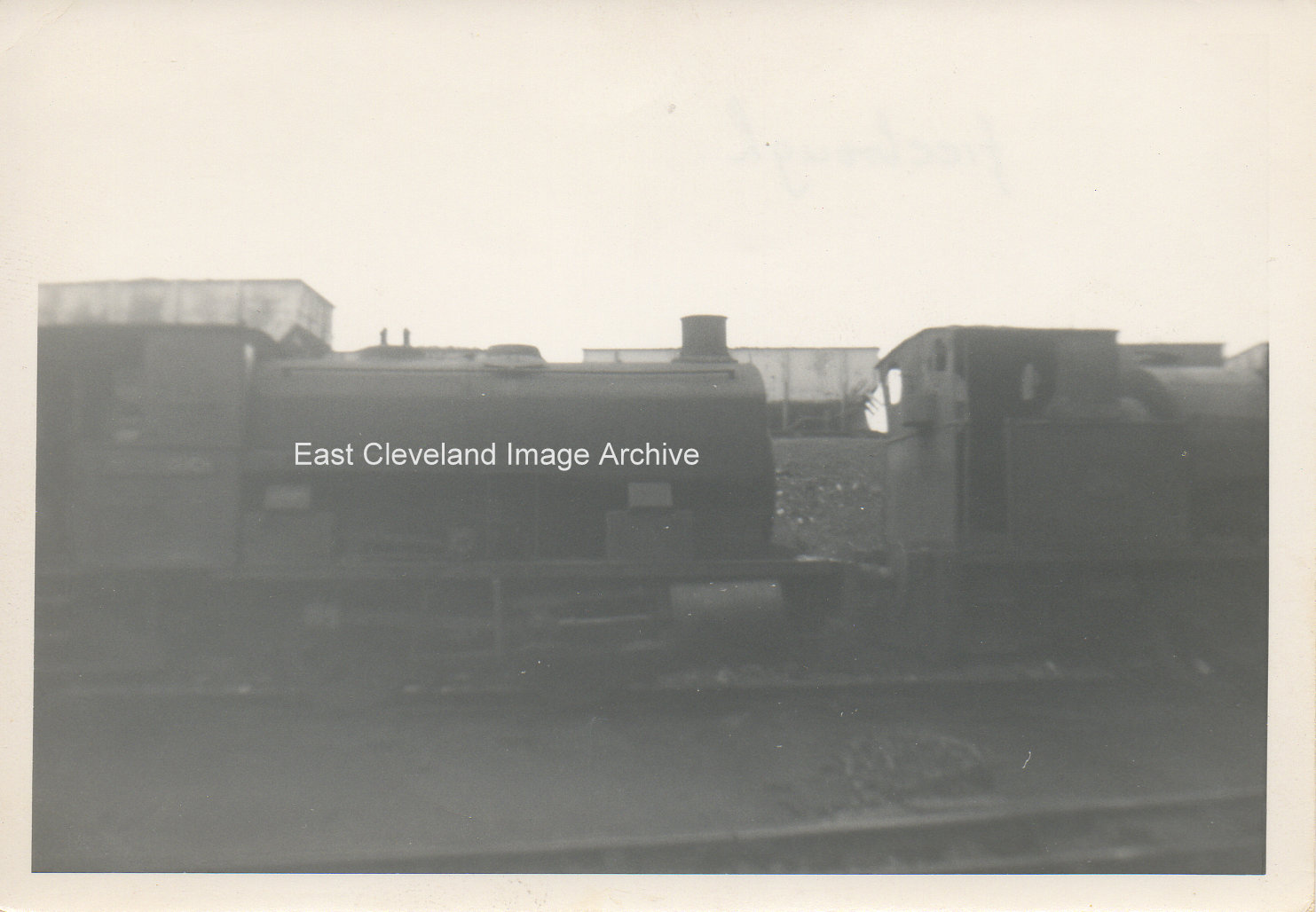
An image of 0-4-0 saddle tank engine “Freebrough”, built by Andrew Barclay of Kilmarnock in 1963. The engine was awaiting disposal at the end of its working life. The Sentinel diesels arrived in 1963.
Image and information courtesy of Eric Johnson.
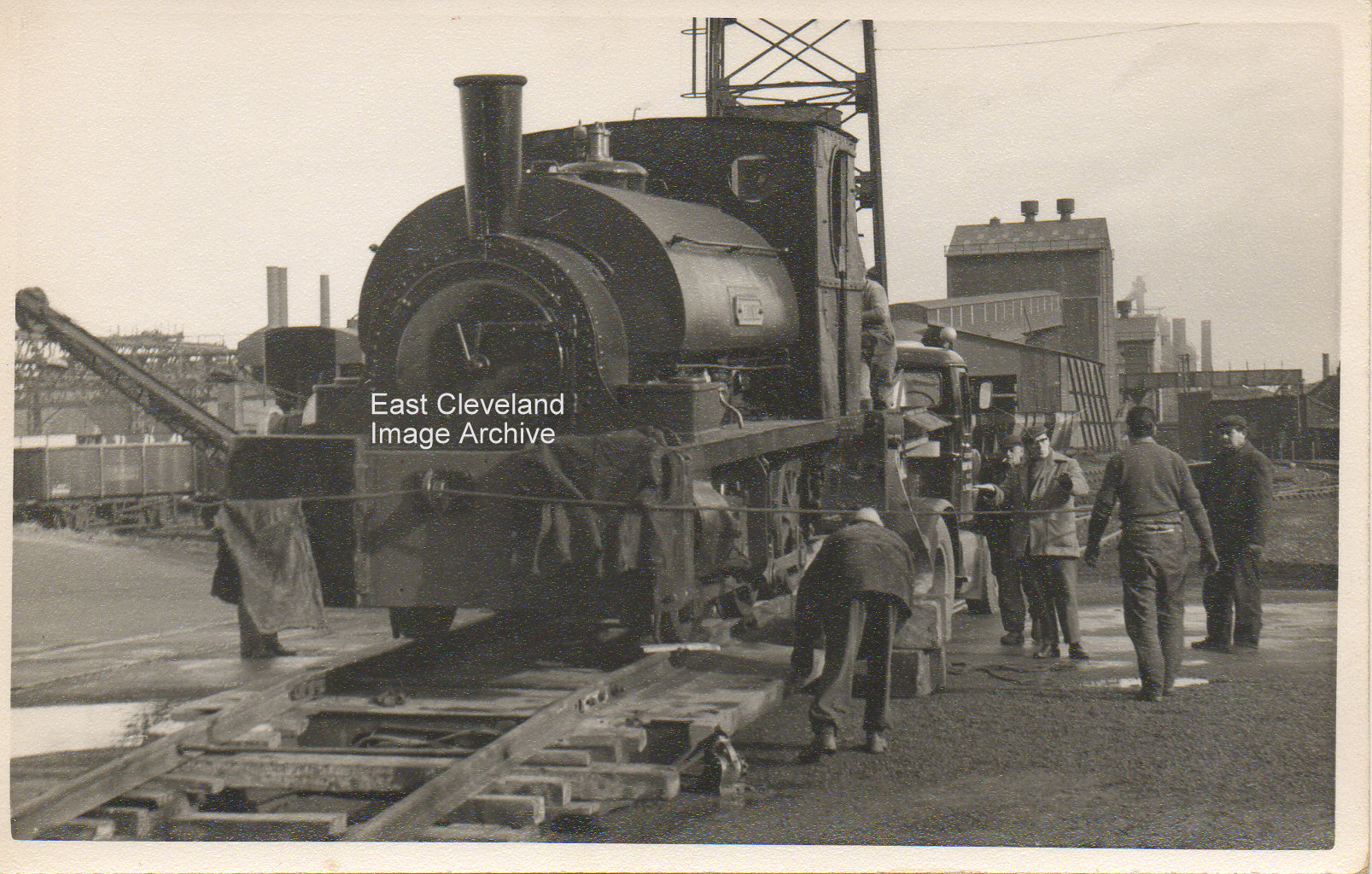
Skinningrove riggers loading Minnie onto an articulated lorry, for transport by road to the Kent & East Sussex Railway in 1968; where she now resides in Mangapps Railway Museum at Burnham on Crouch. Minnie was originally built in 1878; a 0-6-0ST steam locomotive and is one of only 3 Fox Walker locomotives in Britain.
Image courtesy of the Pem Holliday Collection and thanks to Chris for the update.
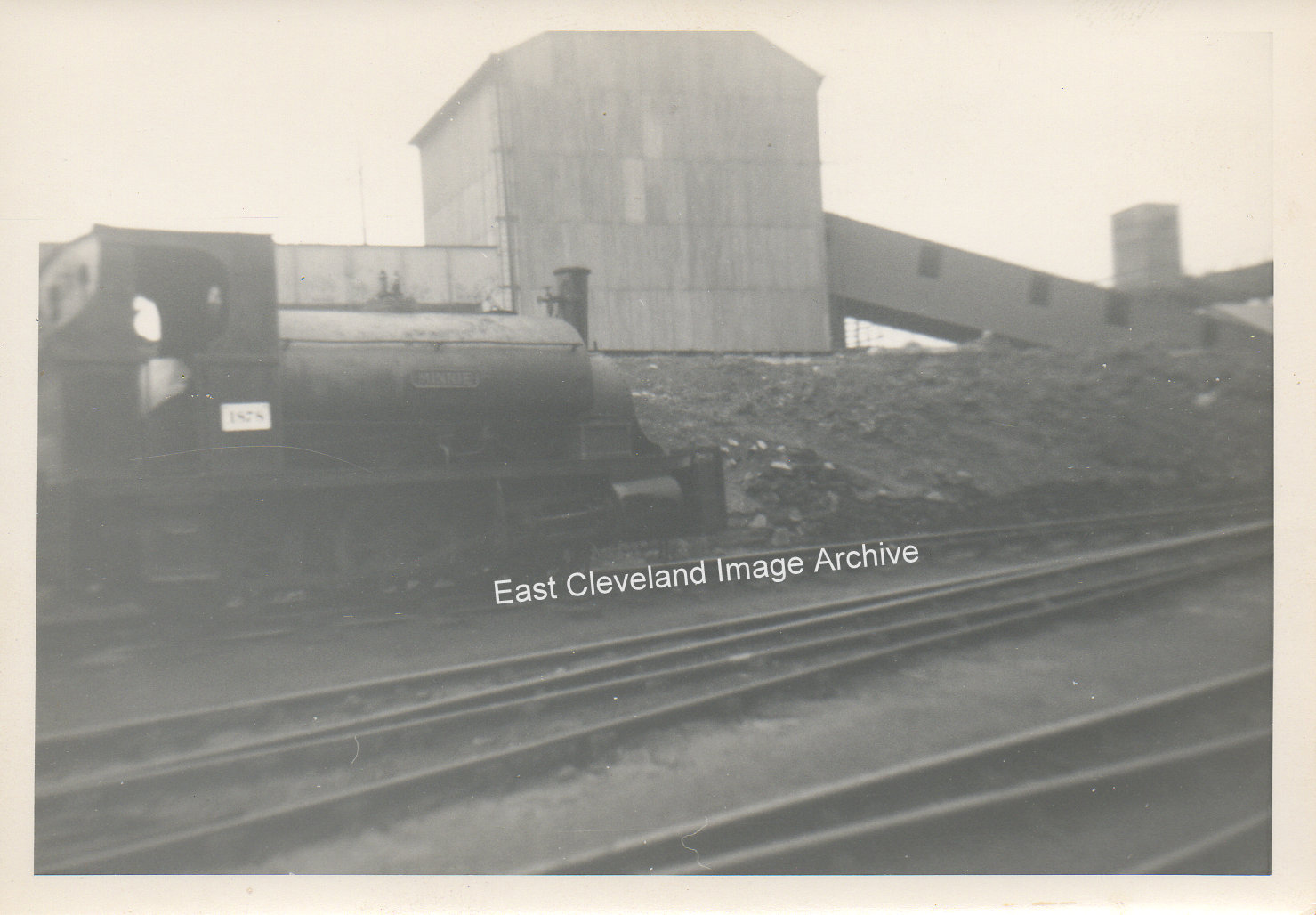
A similar shot as the previous post, about 20 feet further along the track and squarer on. I’m inclined to believe that the structure in the background was the conveyor to the Sinter Plant from the top end of the site. The building in the background, housed the ore crusher, with conveyor belts from tippler in and belt out to No. 5 furnace.
Image courtesy of the Pem Holliday Collection and thanks to Eric Johnson for updating information.
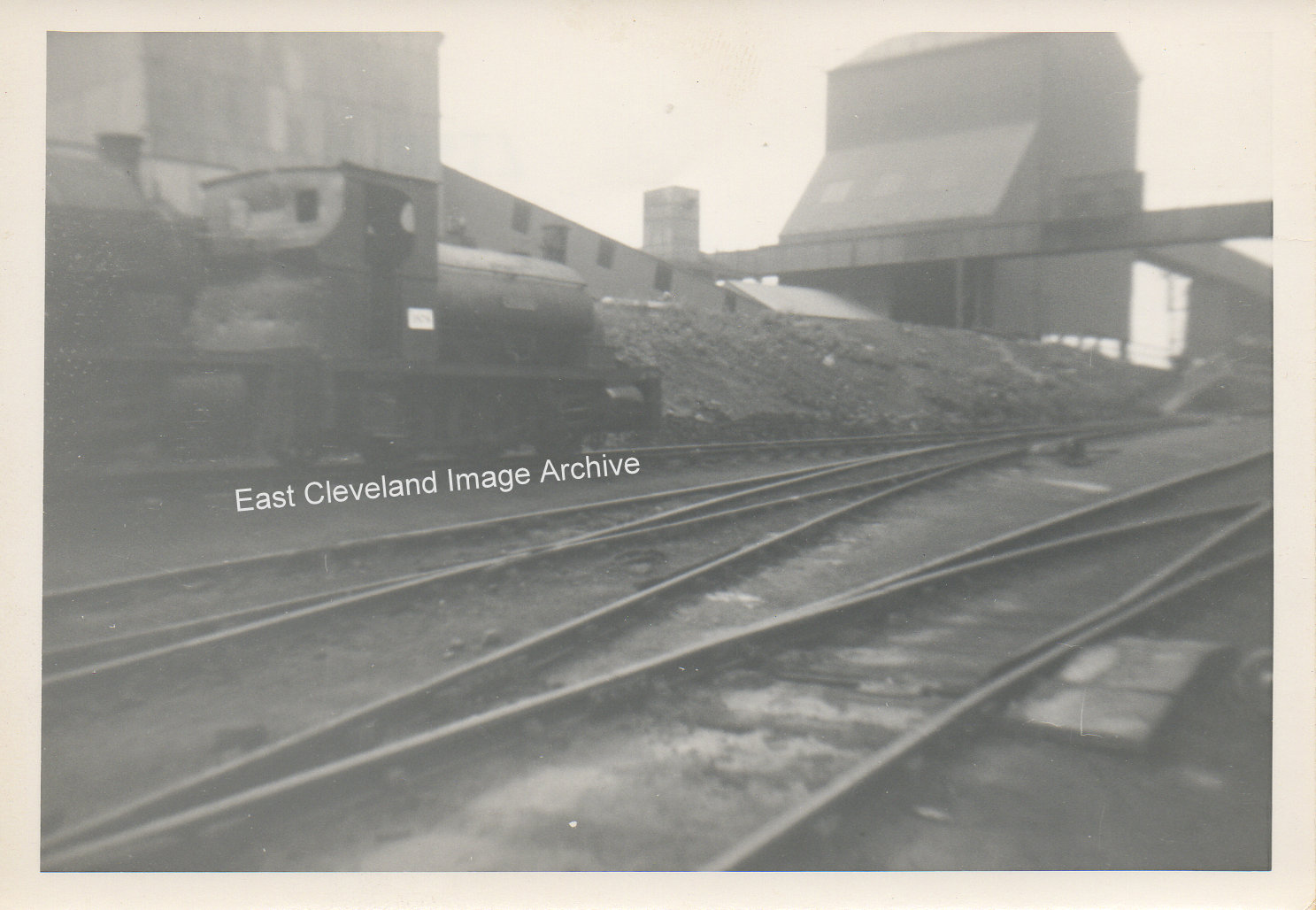
A rather poor photograph of Minnie; the image was shot in poor light, possibly approaching dusk. The building on the left housed the ore crusher, with conveyor belts from tippler in and belt out to No. 5 furnace, with the wagon tippler in this view in the background. Also can be seen the pedestrian gantry crossing the tracks and down to the fitting shop side.
Image courtesy of the Pem Holliday Collection and thanks to Eric Johnson for updating information.
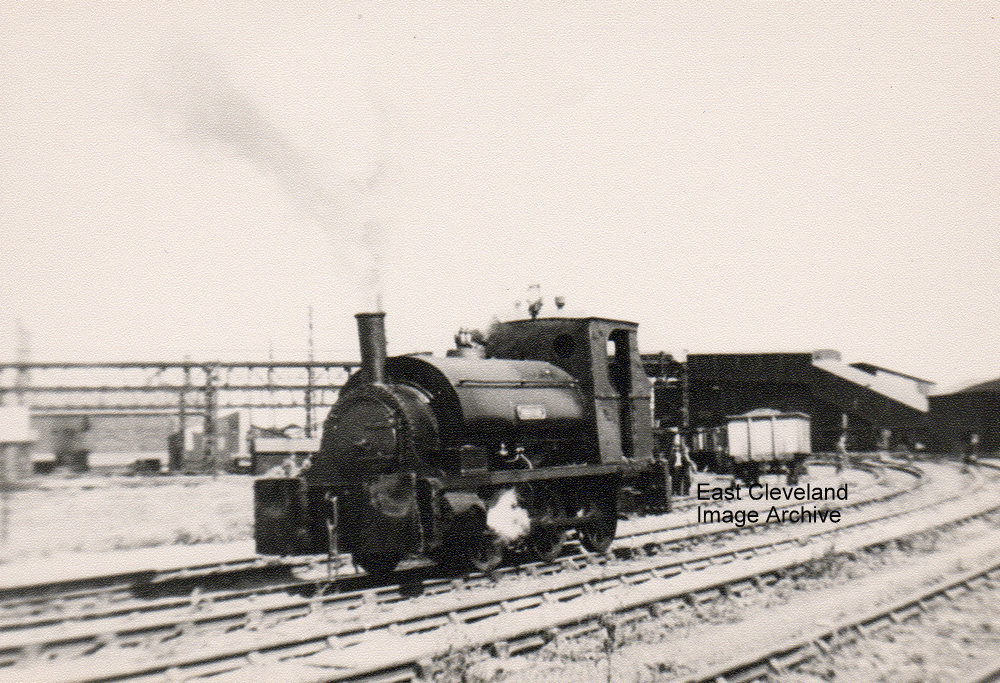
This is a photograph of Minnie, a diminutive 0-6-0 saddle-tank loco, much-loved on Skinningrove Works. In her day she was the work-horse on the site, seemingly everywhere, fussing about with a train-load of trucks. It is believed she was a quarry locomotive originally and that is where she went to end her days too after Skinningrove outgrew her.
Image courtesy of the Pem Holliday Collection.
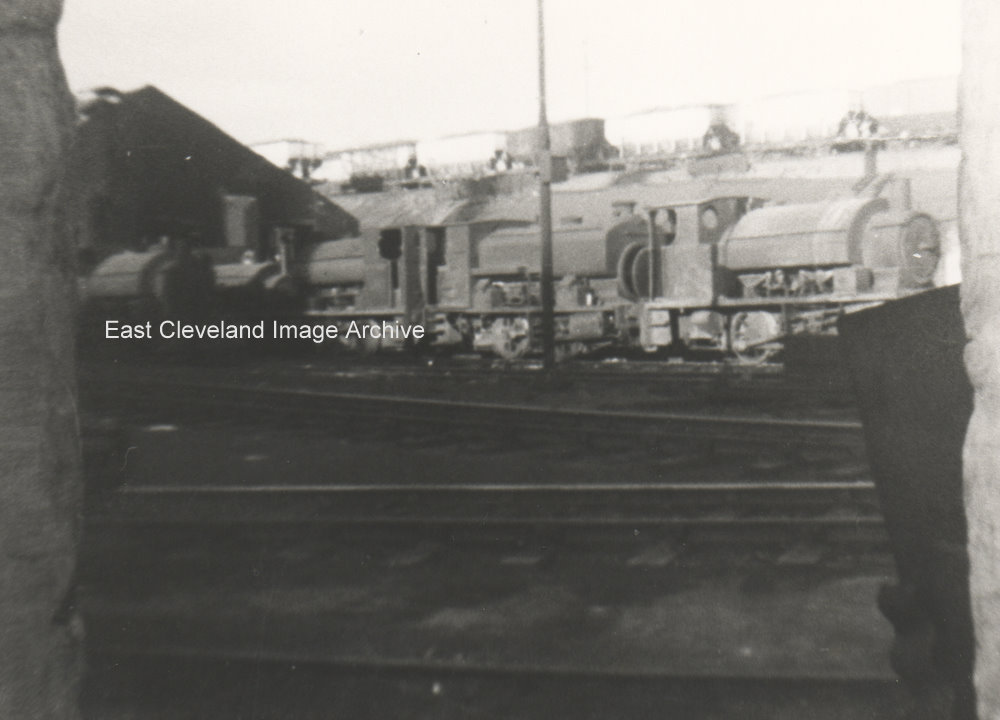
This is a photograph of the old engine sheds at Skinningrove (please correct us if we’re wrong!). The second small ”saddle-tank” loco from the left is the famous Minnie, so loved by all at ”the ’Grove”.
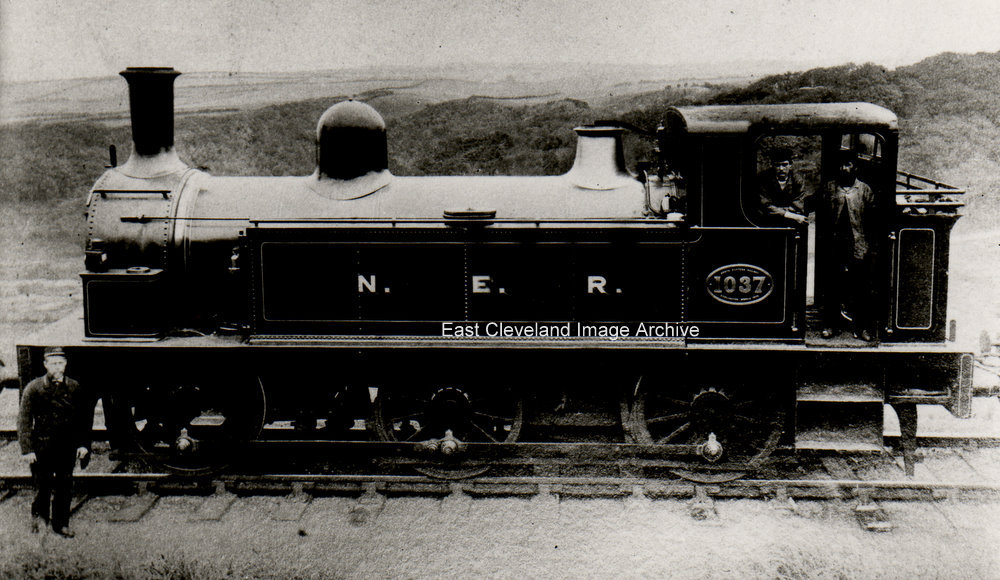
The proud loco men pose for their photographs with their brand new locomotive. The NER insignia being for the North Eastern Railway which became one of the component companies of the London and North Eastern Railway. This is a late Victorian image – I wonder if this is one of the locomotives that used to operate on the Skinningrove ”Z”?
Geoffrey Allen tells us: ”The loco is a class 1037 0-6-0T built at Darlington Works in 1876 one of a class of four specially built in 1876 for the Skinningrove Zig Zag. As pictured it is not new, but as rebuilt in the early 1890′s. The last of the class to work on the Zig Zag was No.1294 withdrawn from Carlin How shed in 1910. This class replaced the 1866 built Class 1196 0-6-0ST’s on the Zig Zag which at 6 tons heavier caused track damage. These were subsequently rebuilt from 1876 as 0-6-0 Tender engines and as rebuilt lasted until 1910.”
Many thanks to Geoffrey Allen for that update.
|
|










Recent Comments